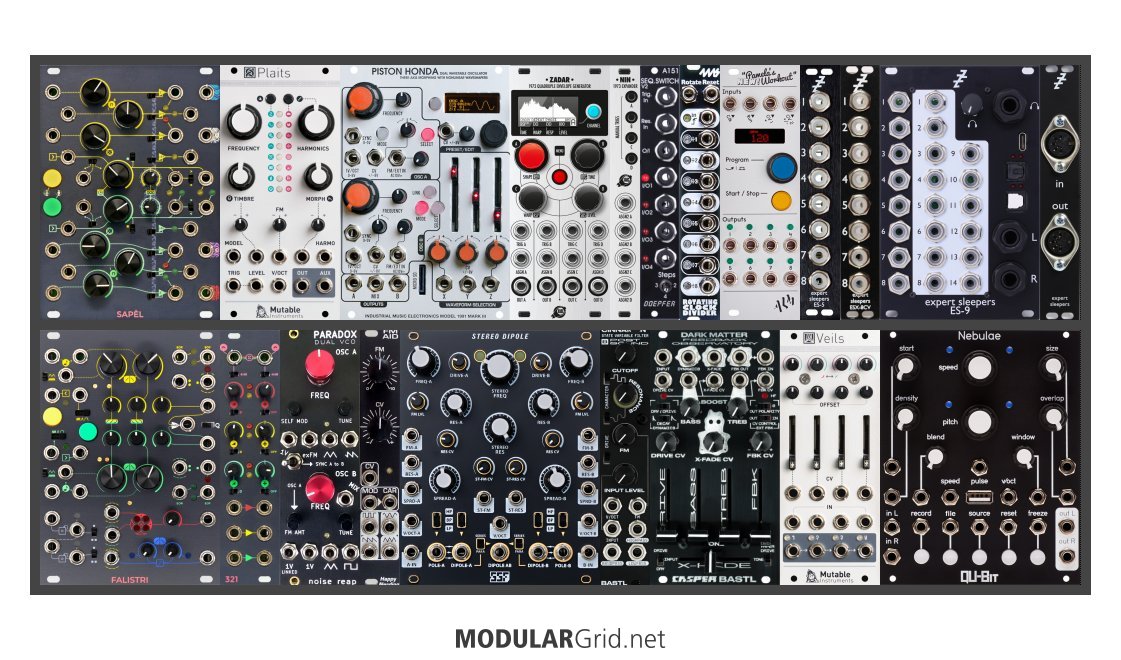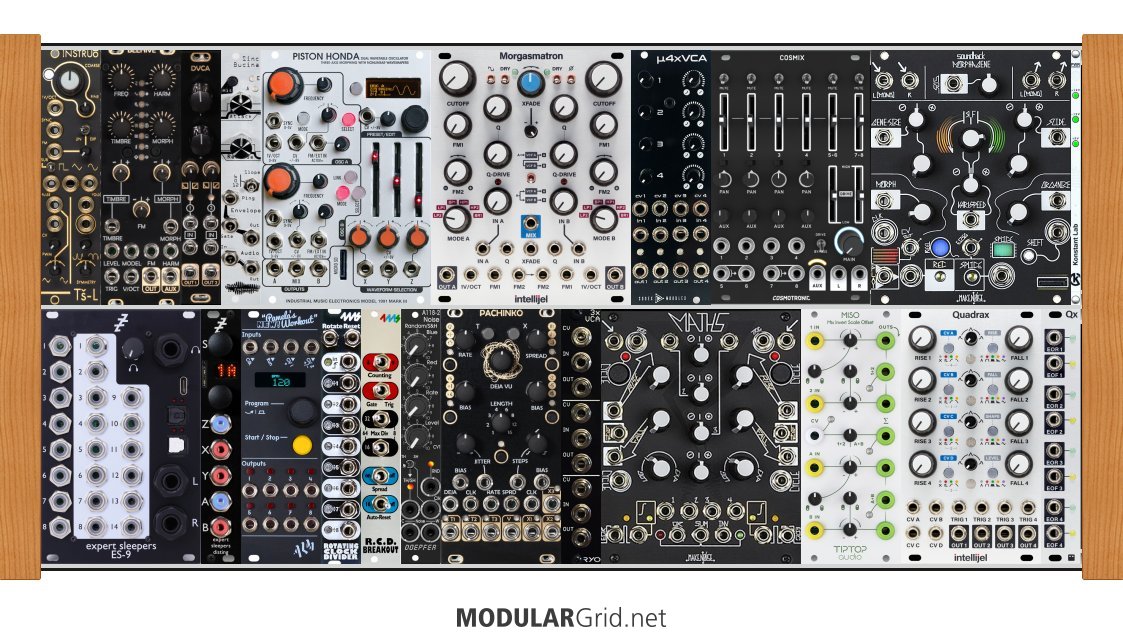
Hi all,
Above is my finished attempt at a modular I'm aiming to build. I've quite a lot of experience with DAW's, VST's, drum machines, and even some classic hardware synths, but this is the first modular synth I'll be putting together. I feel like I've done my research but I'm sure there's a ton I don't know, and would appreciate hearing some input, finding out where the holes are, etc.
The aim for this modular is for IDM/techno/electronic, working with Ableton to generate MIDI and an Analog Rtym drum machine - mainly studio focussed. The goal would be to take MIDI out as CV from the ES-9, run everything around the modular, and then back into the ES-9 so that I can record individual tracks - hence no sequencer. This will allow me to do after-effects processing on the individual channels within Ableton (e.g. reverb, sidechaining, etc) - hence the limited number of effects in the rack. The modular would not be built all at once - I would aim to start with about 50-60% of this, mainly so I can learn each module.
Thoughts on the rack:
MIDI would come out from the ES-9 into the Pam's, to clock the whole rack. I've added a few other utilities (clock divider, mult, sample & hold) and then the Marbles clone Pachinko - this would allow me to use MIDI sequences from Ableton but still have some measure of randomization and shifting.
I'm aiming to have one pure analog oscillator (Instruo Ts-L), and I decided to add the Instruo VCA for it, for good measure. The Plaits clone because gives a wide range of sound options, and then the Piston Honda because I love the sound, I'd like a different form of synthesis (wavetable), and because I can use it to feed other audio through it - not just as a pure oscillator.
The Quadrax with expander (plus the Maths below it) seems to give me quite a lot of options on envelopes/LFO's.
Morgasmatron provides options to run the filters independently or together, which I like the flexibility of - plus I like what I've heard from them.
The 2 noise engineering modules plus the Happy Nerding Tritone are aiming to give me some options on saturation and distortion - also the Noise Engineering modules, both the filter and low-pass gate give me another option on filters (and I would like at least one LPG module - I like the short decay "ping" sounds).
The Doepfer VCA's I'm a little unsure of - I know I will need a number of VCA's, and this seemed an effective means of using them - but another alternative would be 2x Happy Nerding 3-VCA's, or the Quad VCA from Intellijel
The Morphagene - I just love the sounds of these, and it gives me lots of options to gain anything from background ambience to effects.
Finally the ST Mixer would allow me to mix some sounds together before the ES-9, and the Disting is really just to allow me to test out different functions / fill any gaps that I may have.
The questions I would have is - does this fundamentally work or is it a mess, are there any other module recommendations, and finally I do have some blank spots left - which I'm assuming I'll end up filling with utilities - but are there any recommendations for these?
Open to any and all criticism!



